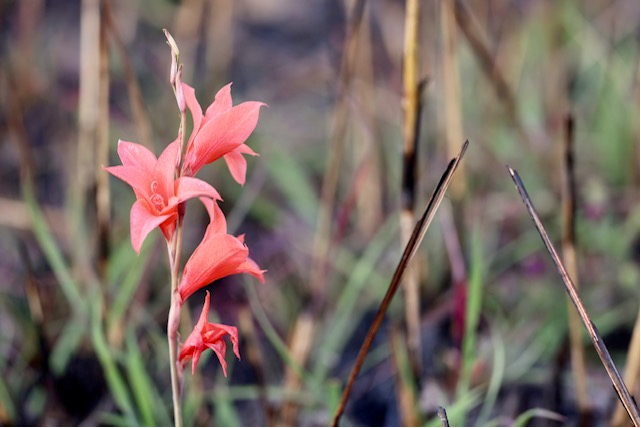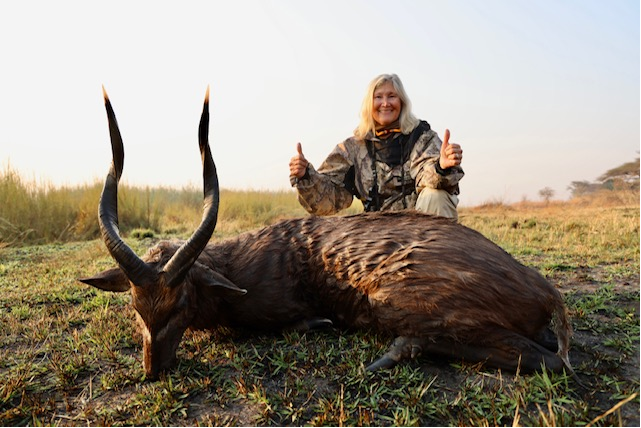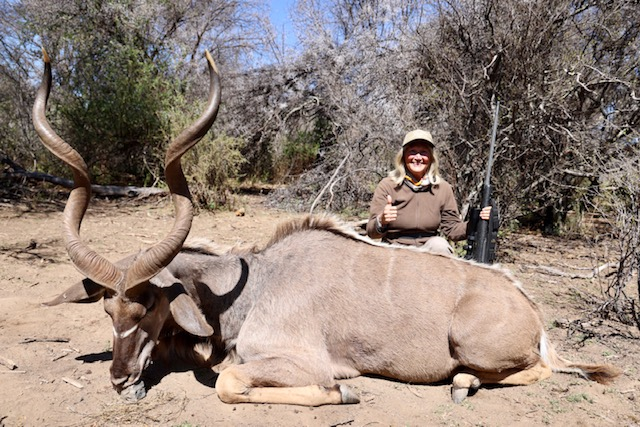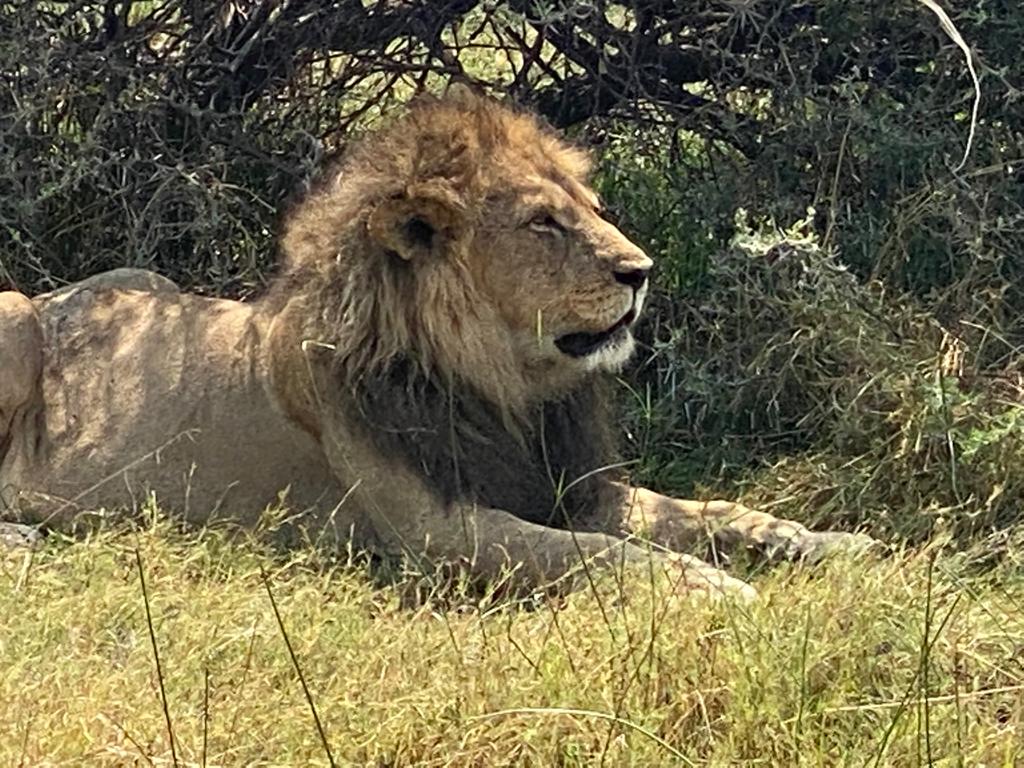Our safari began in Zambia with Fico Vidale Safaris to hunt lion, leopard, hippo and crocodile as well as a variety of plains game. The lions and leopard were either too young or too smart, never giving me the opportunity to bag the right one with my crossbow. However, I had already taken a lion and leopard in Zambia with a compound bow, so I didn’t need them to complete my Dangerous Seven goal. However, I did shoot a hippo and an enormous 14’ 2” crocodile at 50 yards with my .375 H&H magnum, and a very large roan antelope at 389 yards with my wife’s .300 Win Mag. My wife was successful with a good sitatunga and red lechwe.
After three weeks in Zambia we moved to Botswana’s NG8 to hunt with Mike Murray and Tholo Safaris. Mike is known as one of the two top professional elephant hunters in Africa. The 83-pound elephant that my wife had shot was with Mike in 2021, making a perfect frontal brain shot from 40 yards. I was hoping for the elusive 100-pounder, and late in the afternoon on the first day of the hunt we snuck to within 30 yards of a very large elephant. When Mike told me it would clearly be larger than my wife’s elephant, I didn’t hesitate. “Let’s shoot him!”
A side brain shot from my .375 magnum knocked him down, but seconds later he stood up and began to walk slowly away in the fading light. We finished him with a couple of insurance shots. His largest tusk weighed 91 pounds! Not quite the 100 pounder I was hoping for, but a magnificent tusker nonetheless. He provided the local villagers with enough meat to feed them for many months.
We then moved to Mike Murray’s free-range property in South Africa to hunt Cape buffalo and plains game. I never expected the dramatic situation that would unfold a mere 30 yards in front of me. Thirty yards in front of me, two huge Cape buffalo were repeatedly goring each other in a battle to the death.
When I aimed at the first bull and pulled the crossbow’s trigger, the buffalo slumped to the ground with a perfect heart shot, but the second, somewhat larger bull, kept trying to gore him while he was down. My PH, Sakie Retief, whispered, “Shoot the second one.” Now, with one bull on the ground and the second very angry bull continuing to attack him, I was again reminded of Black Death. The fact that my PH was behind me with a .470 double rifle was little comfort at such close range. However, I eased around the right side of the bush and fired a broadside shot from a mere 25 yards. Even though the buffalo was fatally hit in the lungs his adrenaline kicked in, and he walked slowly into a very thick stand of trees and bushes. Sneaking closer, my second shot split a 4” tree branch and the buffalo walked even deeper into the thick cover. He was waiting for us in a tangle of downed trees, giving me hardly any shooting lane. But I found a very small opening which gave me only a shot at his spine from less than 10 yards. The shot knocked him down, and one more shot finished him.














































